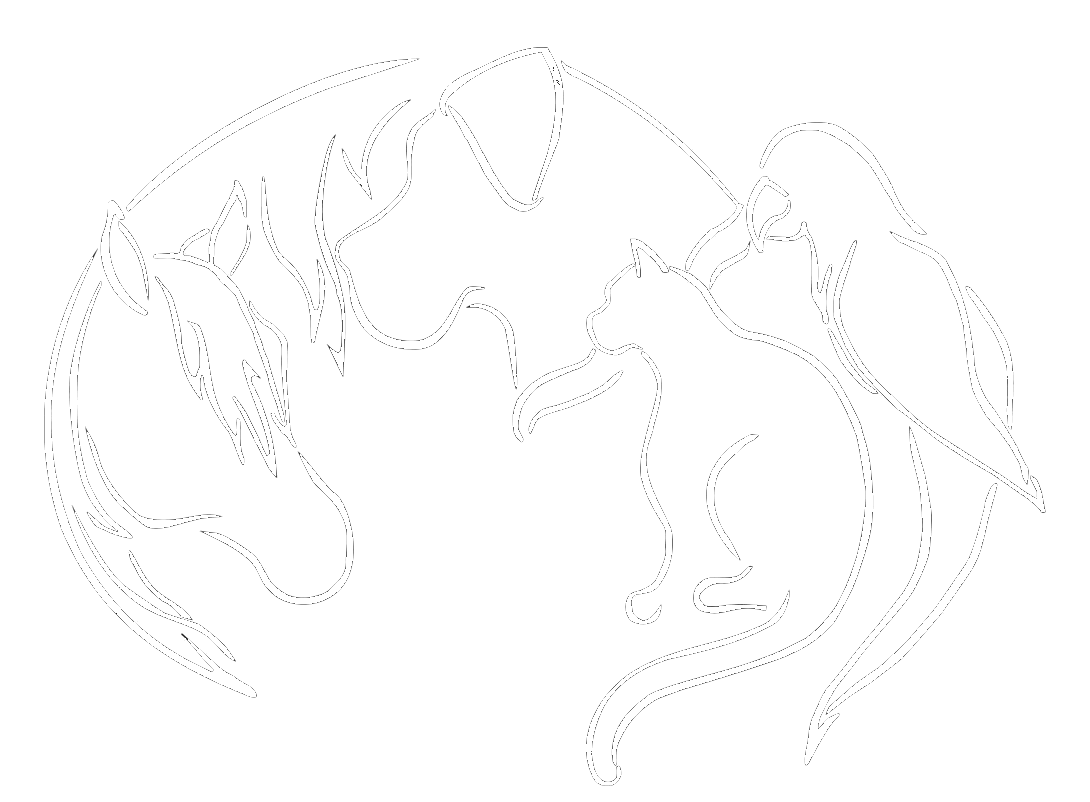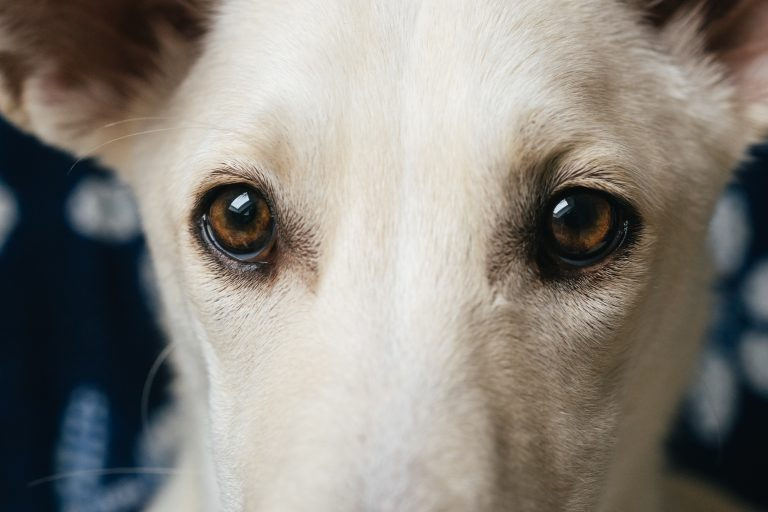This is Sammy, a 3 year old miniature Rottweiler who came to our clinic with a 14 hour history of squinting her right eye. Sammy's owner also mentioned that she had been somewhat depressed and less interested in playing with her toys and eating her supper the previous night.
On physical exam, Sammy's right eye had large red blood vessels visible against her sclera (the white part of her eye) and an enlarged pupil. Sammy was squinting her right eye and was reluctant for us to examine that side of her head. We checked Sammy for a corneal ulcer and for dry eye, two common conditions that can cause the eye to appear red, and both of these tests were negative. We then checked the pressure inside Sammy's eye using a tool called a rebound tonometer. The tonometer bounces a very small probe off the surface of the eye - this is surprisingly well tolerated and most dogs and cats do not react to the tonometer. The intraocular pressure in Sammy's right eye was severely elevated, which indicated that she had glaucoma.
Enlargement of the veins around the eye is a common finding in glaucomatous eyes
Glaucoma is one of the most devastating eye diseases that can afflict both dogs and cats. Glaucoma is characterized by an elevation of the intraocular pressure, or increased pressure within the confines of the eye. This increased pressure causes damage to the optic nerve and retina, and can result in irreversible blindness in less than 36 hours. The initial signs of glaucoma can often be subtle, making glaucoma easy to miss in the early stages. Glaucoma can also be severely painful. People with a sudden onset of severely elevated intraocular pressure typically describe the pain as "the worst headache of my life."
If glaucoma is caught in the early stages, aggressive treatment with medication to decrease the intraocular pressure can help decrease the pain and restore vision. Frustratingly, medication alone is usually not sufficient for long-term control of most forms of glaucoma in animals. If the glaucoma is caught early enough, a veterinary ophthalmologist may be able to perform one or more surgical procedures to try to maintain a healthy intraocular pressure, although these procedures do not always provide long-term control.
Sammy being a good girl while having her intraocular pressure checked
Despite our best efforts, many glaucomatous eyes end up becoming resistant to both medical and surgical treatment. For these patients, enucleation - removal of the affected eye - is the best treatment to provide long-term comfort and quality of life. This is a very difficult decision to make as a pet owner, but uncontrolled glaucoma results in an eye that is non-functional and continuously painful. While dogs and cats with glaucoma aren't able to display signs of eye pain, patients with uncontrolled glaucoma who have the affected eye removed will usually become more energetic, playful and happy.
Cloudiness in the cornea of a cat's eye with glaucoma
Because eye diseases including glaucoma can progress quickly, it's very important to have your pet assessed by a veterinarian as soon as possible if you notice redness or inflammation of the tissues around the eye, cloudiness to the cornea (the clear window), uneven pupil sizes or squinting. Please do not hesitate to contact us if you have any concerns about your pet's eye.
Thanks to Dr. Rhea Morgan for allowing me to use her excellent eye photos.





